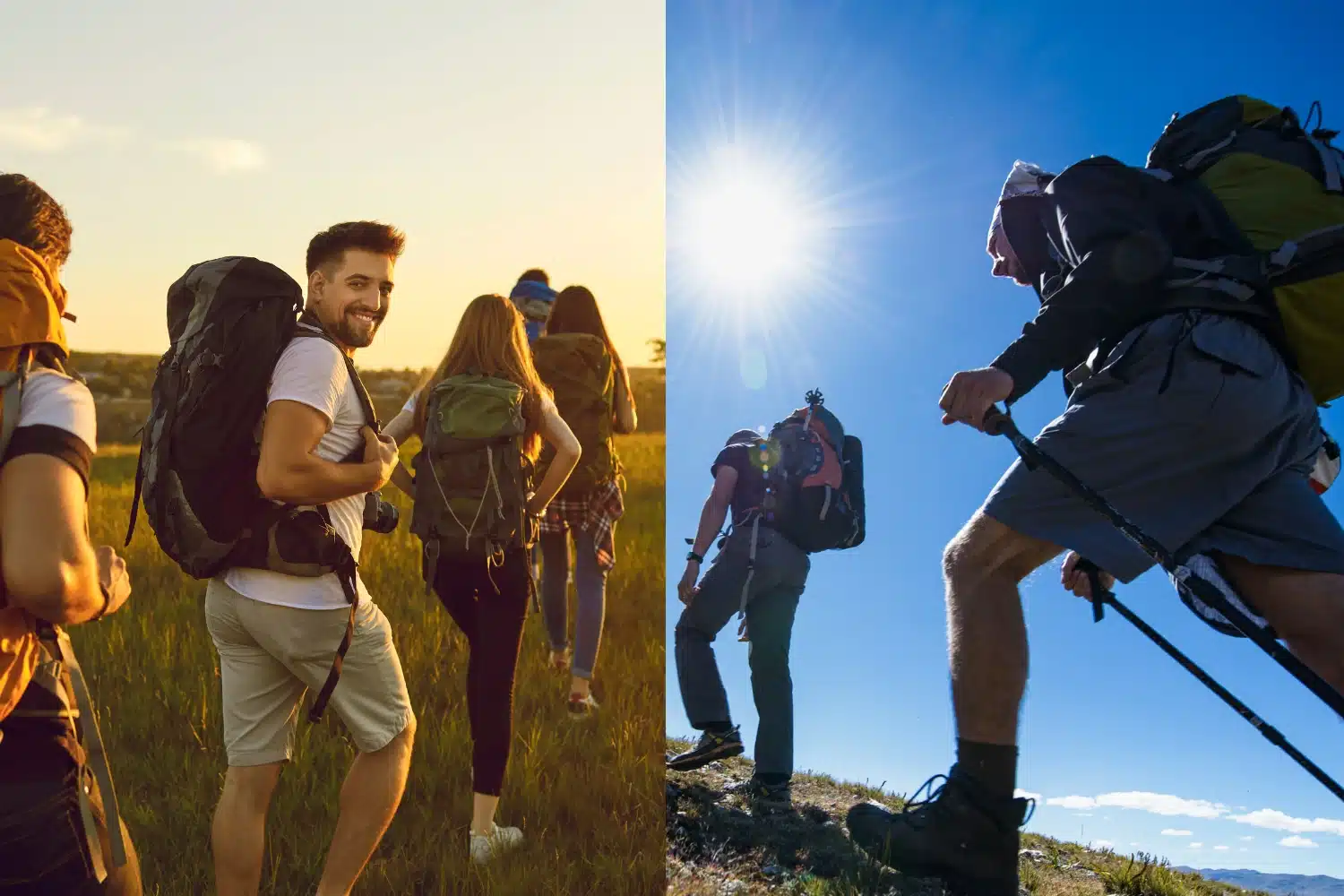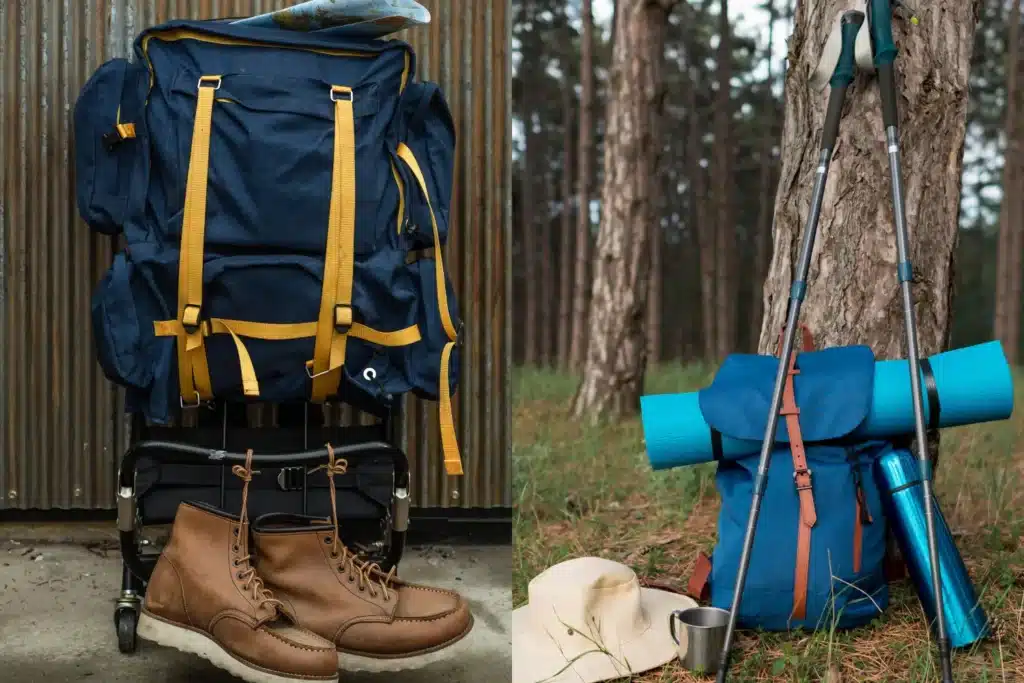

Most people often use hiking and trekking interchangeably, however, there is a very minute difference between both. While both of them take you through beautiful landscapes on foot, Hiking is more of a recreational relaxed trail, that takes you through easy-to-reach green meadows and lovely hillsides. Whereas, trekking is a thrilling activity. Trekking takes you through an adrenaline-rushed journey and breathtakingly beautiful scenes.
Both are unique and offer different experiences to the participants. In this journey of understanding hiking versus trekking, we’ll uncover the adventure it holds and the difference between trekking and hiking. So, lace up your boots and join us on a journey through these outdoor adventures, as we explore the different parts that define hiking vs trekking.
Technical Definition
To have a better understanding of the hiking vs trekking meaning. We must first understand the technical and basic definitions of both these adventures.
Hiking
Hiking is a popular activity, especially in the mountains. It comprises established trails, shorter durations, and a refreshing nature. The hike is more popular because of its easily accessible nature to various fitness levels. It is one of the easiest ways to explore nature and its beautiful meadows.
When on hike trails the paths are usually smooth diverse terrain taking individuals through forests, hills, and meadows. The main focus of the hike is on the fun journey, appreciating nature, and engaging in physical activity. The simplicity and recreational aspects of hiking contribute to its widespread appeal as an activity that encourages people to connect with the outdoors.
Trekking
Trekking is a thrilling and adventurous outdoor activity, it is an enhanced and amplified version of the hike. Trekking gives you an adventurous experience in some difficult-to-achieve areas, that extends by the multi-day journey, with an adventurous trek route and often unexplored locations in the arena. Contrary to traditional hiking, trekking takes you through adventurous mountains, deserts, and wild forests.
This thrilling adventure demands a higher level of physical activity along with endurance and mental strength. The main attraction of trekking is the thrill of going beyond what’s explored offering encounters with unique landscapes and cultures. Trekking through some of the best diverse terrains and plains makes it a sought-after choice for those seeking a deeper connection with nature and a test of personal limits.
Key Difference
Duration
- Hikes are a smooth and delightful journey into nature, that takes you through serene and scenic trails. Hikes are ideal hideouts for those looking for quick fixes in nature that can often be day trips or can last for the weekend. Hikes offer a perfect blend of outdoor exploration and rejuvenation within a short timeframe.
- Trekking is an adventurous thrill that goes beyond just a day. Because of its adventurous nature, it often stretches for weeks. The extended duration fosters a unique connection with nature. This sets trekking apart, inviting enthusiasts on transformative journeys.
Type Of Terrain
- Hikes typically follow well-maintained, smooth, and well-connected trails. It offers accessible and comfortable outdoor experiences. Hiking trails wind through diverse landscapes, from lush forests to scenic coastlines, ensuring a pleasant exploration without the challenges of rugged terrains.
- Treks involve getting on paths that are less-explored areas that are characterized by diverse terrains such as dense forests, towering mountains, and expansive glaciers. Treks immerse individuals in the raw beauty of nature. It presents trekkers with challenges that go beyond most walked paths.
Level Of Difficulty
- The hike is an adventure for all, it caters to everyone with every fitness level. No matter if you’re just beginning your adventure journey or seasoned hiking trails offer a diverse range of options. It comprises gentle paths through lush forests to more demanding routes with elevation gains. The accessibility of hiking makes it an inclusive activity for people of all physical abilities. This versatility ensures that individuals can tailor their hiking experiences.
- When it is about difficulty trekking stands apart from hiking. While trekking on an elevated level your physical and mental fitness are tested. The demands of longer distances, steeper inclines, and potentially harsh conditions distinguish treks. For those who are ready to go on difficult treks, strategic planning, and resilience are important. The physical challenges are complemented by mental fortitude, making trekking a holistic adventure.

Kind Of Equipment Used
The difference between hiking and trekking is that you are embarking on the same adventure just one with more rush and thrill. Both share a common bond in their dependence on gears when it comes to outdoor exploration. Both of these can be led by a similar set of essential equipment. As it requires a lot of walking up and down the hills and mountains both activities necessitate reliable hiking boots, waterproof gear, a sturdy rucksack, walking poles, and snacks.
The only difference between trekking and hiking lies in the duration you are going to spend outdoors. Trekking often takes extended over a longer period and requires additional preparations, especially when you go on trekking in winter seasons such as carrying a tent for the camp, survival gear, and versatile, odor-resistant clothing. While the itinerary for gears can be different, the distinction arises in the extended stay on the trail, making trekking a more immersive and prepared experience for the wilderness explorer.
Choose The Right One
While embarking and deciding to explore nature, it is crucial to understand the difference between hiking and trekking. The selection between hiking and trekking depends on individual strength, fitness levels, experience, and goals. Hiking is ideal for those seeking a more casual and accessible outdoor experience. It suits beginners, families, or individuals looking for shorter excursions in diverse terrains. On the other hand, trekking caters to those with a higher fitness level and a desire for more challenging, immersive adventures in remote landscapes. Tailoring your choice to these factors ensures a fulfilling outdoor experience.
Conclusion
Hiking and trekking may differ in terrain, duration, and gear, but both activities promise enriching encounters with nature. Whether you prefer the simplicity of a day hike or the challenges of an extended trek, the outdoors offers unique rewards. Embrace the diversity of these adventures, tailoring your choice to your preferences and aspirations. Nature has something for everyone. So, equip yourself, step outside, and let the trails be your guide. As John Muir aptly said, “The mountains are calling, and I must go.” Answer that call, and discover the wonders that await in the great outdoors.
